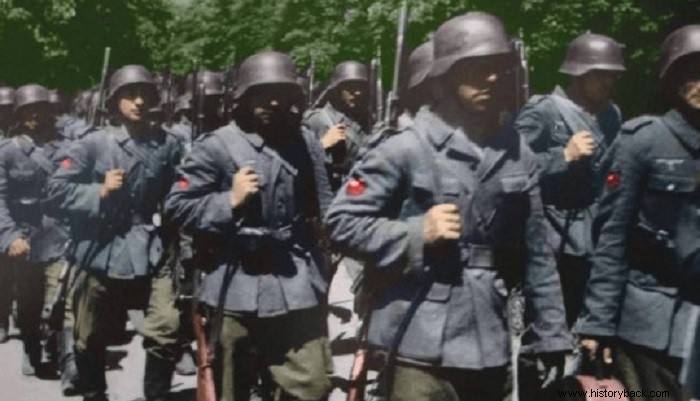
During World War II the Germans formed a large number of units manned by Soviet nationals. One of these formations was the Georgian Legion. Did it include not only prisoners of the Red Army who wanted to escape the horrible death that the Germans reserved for the prisoners, but also anti-communists and supporters of its independence? Agriculture volunteers.
One of the battalions of the Legion in question was the 882nd Infantry Battalion (TP) of "Queen Tamara" (Thamar) which had a force of about 800 Georgians and 400 Germans and guarded the well-fortified Dutch island of Texel . The Georgians of the battalion were almost all former Red Army soldiers who had been captured.
The 882nd TP was formed in Poland in June 1943 and from September 1943 was stationed in the Netherlands. It was sent to the Texel sector in February 1945. At the end of March the Germans decided to send the battalion to the Dutch mainland to fight against the Allies. This was also the reason for the rebellion of the Georgians that broke out on the night of April 5-6, 1945 and lasted until May 20, i.e. 12 days after the start of World War II in Europe.
Revolt of the condemned
Under the leadership of Salva Lolazde , a squadron commander of the Red Air Force who had been captured and served in the 882nd TP with the rank of lieutenant, the Georgians attacked the Germans while most of them were sleeping and massacred them with knives, bayonets and pikes . They also killed the German guards who managed to shoot, thus alerting the coastal artillery guards.
The Georgians had been in contact with the Dutch resistance while an Allied landing was expected. The Dutch resistance did join the Georgians and help. The landing of the Allies, however, never took place. The Germans for their part, although they had already lost the war and knew it, reacted immediately...
Immediately the 163rd Marine Regiment, 2,000 strong, landed on the island under cover of the coastal guns. Five weeks of fierce fighting followed. The Georgians and the Dutch fought really heroically. On April 25, Lolazde was killed, but resistance continued, especially in the Ireland area and at the island's lighthouse.
The Germans did not take prisoners. They forced those they caught to dig their own graves and executed them, calling them "traitors". The offer was touching, but also the self-sacrifice of the Dutch residents of the island who tried to hide Georgians. The battle on the island continued after May 5th, when the rest of the German forces in the Netherlands capitulated, and also after May 8th , when Germany surrendered…
Such was the rage of the Germans on the island against the Georgians. In fact the battle did not end until May 20, when Canadian troops finally arrived on the island, making the Battle of Texel perhaps the last of World War II in Europe. The island was destroyed by the conflict. Dozens of houses and farms were set on fire. At least 565 Georgians, 812 Germans and 120 Dutch were killed in the battle.
The fate that awaited the 228 surviving Georgians was no better. Almost all surrendered to the Soviets. Of these, 26 along with their families who were also arrested disappeared forever. The rest were sent to the gulag. A few survivors were released in the mid-1950s.
